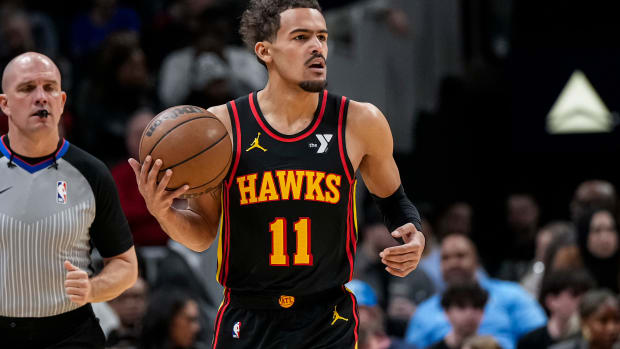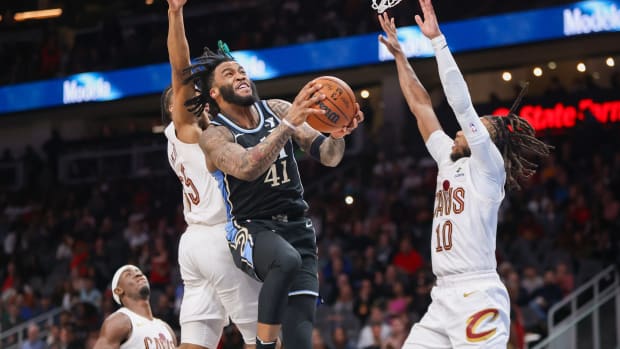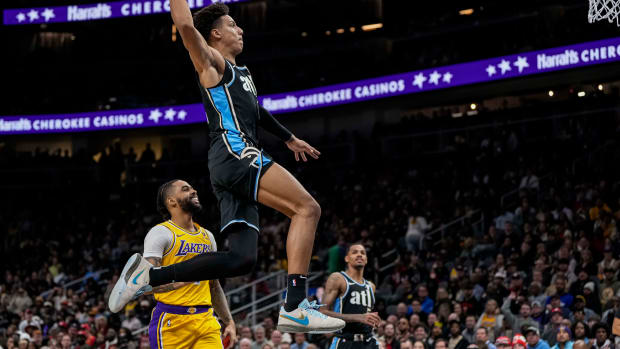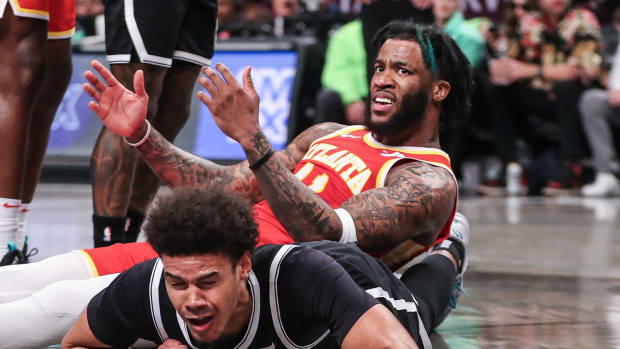Hawks vs. Pacers Game Preview
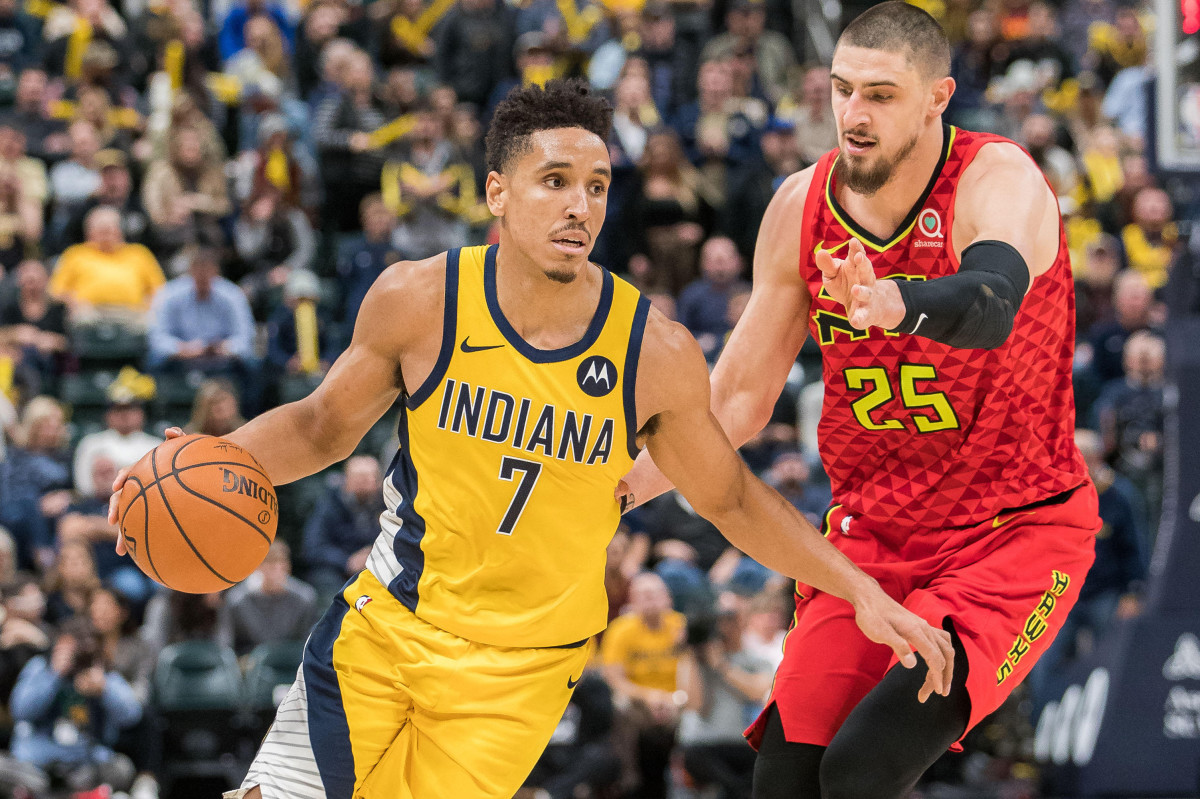
The Hawks’ first meeting with the Indiana Pacers ended in heartbreak – a 105-104 overtime loss that could have been put away in regulation. Atlanta squandered season-high 49 points from Trae Young in that game, and all other Hawks combined to shoot 1-of-17 from 3. Both teams scored under a point per possession and Atlanta turned the ball over a whopping 24 times. Friday’s game figures to be less sloppy, but that’s the sort of game into which Indiana drags its counterparts.
In the age of small ball and streamlined shot profiles, the Pacers start play a more retrograde game. They start two centers, wear on their opponents, and bend the game to their slow, physical style. Less than 28 percent of Indiana’s shots come from 3-point range – the second-lowest mark in the league – and the Pacers take the second-most long midrange attempts in the league. Despite that, Nate McMillan’s group has a league-average offense and top-10 defense – good for the 10-best point differential in the NBA.
Game Time: Friday, December 13, 2019, 7:30 p.m. ET
Location: State Farm Arena, Atlanta, GA
TV: FOX Sports Southeast, FOX Sports Indiana
Streaming: NBA League Pass, FOX Sports Go
In lieu of a bona fide All Star (at least until Victor Oladipo returns from a devastating quad injury), the Pacers operate largely by committee. They give opponents multiple threats to account for, each of which is capable of inflicting damage in his own way. Seven Pacers average at least nine points per game, and most do so on above-average efficiency. If Malcolm Brogdon’s physical drives or Domantas Sabonis’ brutalizing post game isn’t working, Indiana might turn to Myles Turner picking and popping or Doug McDermott flying around screens.
While they take inherently less efficient shots than most teams, the Pacers are the most accurate midrange and sixth-best 3-point shooting team in the league, which helps balance out the outsized disparity between two points and three. On defense, they take away the 3-point line and force teams inside the arc, where Myles Turner lurks to send away shots. Only the Bucks and Raptors hold teams to a lower shooting percentage at the rim. Indiana is vulnerable in the short midrange (defined as 4-to-14 feet by Cleaning the Glass), where opponents shoot nearly 44 percent.
That’s still a profitable outcome for the defense, but Young is one of the best floater artists in the league, which makes surrendering those shots more costly. Atlanta made eight of their 16 short midrange attempts in its first game against Indiana – mostly by Young; if the Pacers willingly concede floaters again, Young could have another big night. Indiana might be able to live with that. If taking away his pull-up 3s, layups, and lobs comes at the expense of Young shooting 15 floaters, the Pacers will be happy with that.
Still, Young broke their defensive scheme in late November, forcing McMillan to employ traps in the pick-and-roll rather than playing his preferred drop coverage. Indiana might be more reluctant to sell out on Young now that Kevin Huerter is healthy and Allen Crabbe is shooting the ball well. Young has seen plenty of blitzes before, and the Hawks are getting better at counteracting them. If Turner ventures 35 feet from the basket, the rim becomes perilously exposed for Indiana, and the Pacers don’t fly around on defense the way Miami and Chicago do.
On the other end, getting back in transition will be an imperative for the Hawks. They outscored and out-executed the Pacers in the halfcourt in their first meeting, but Indiana made up the deficit by dominating the Hawks in transition. Indiana doesn’t run very often against most teams, but if Atlanta leaves itself vulnerable, the Pacers are equipped to attack.


